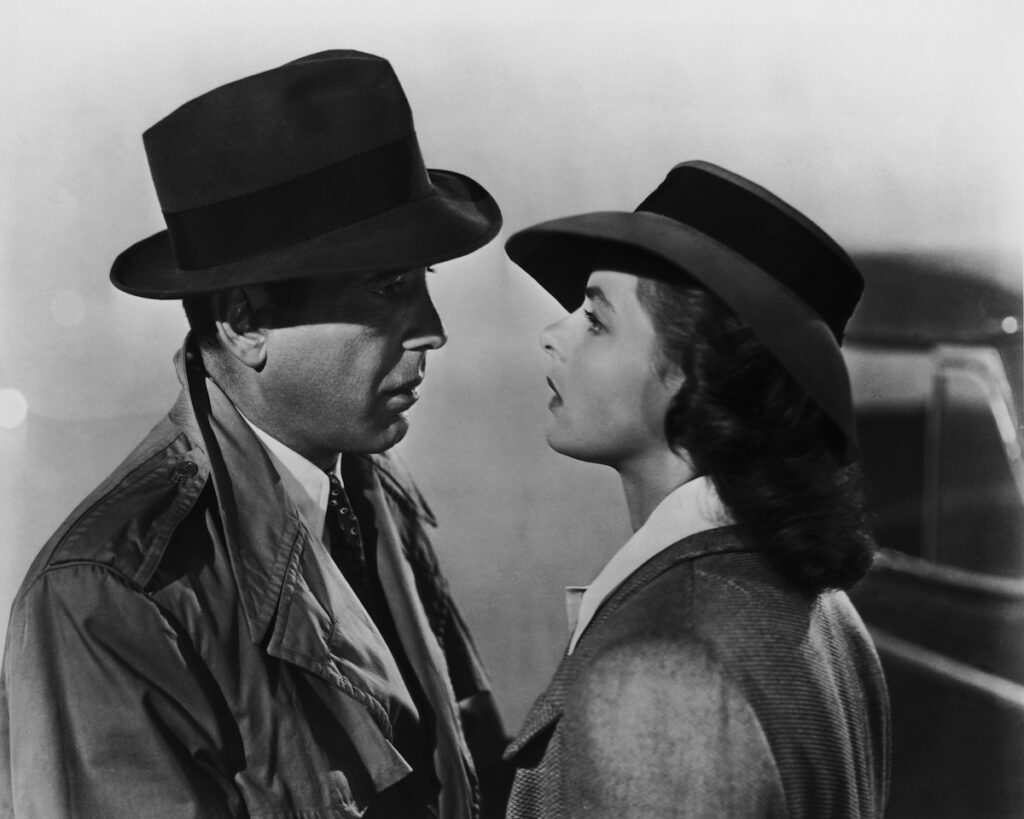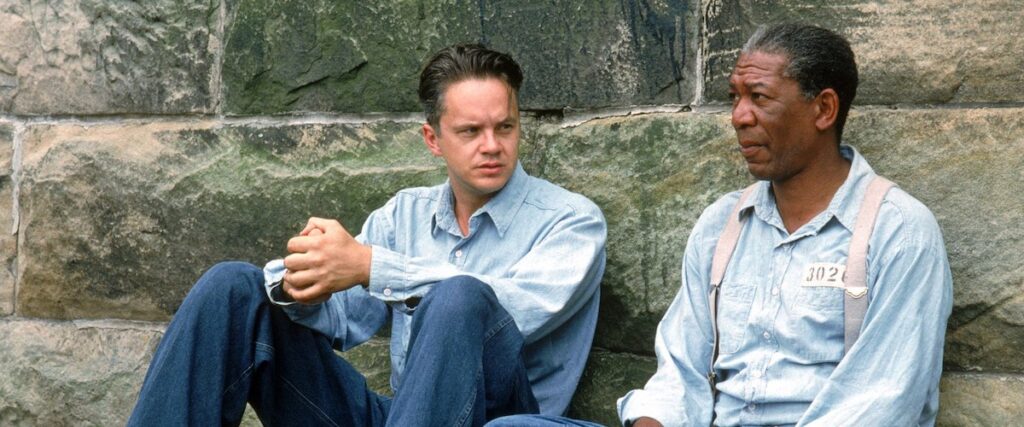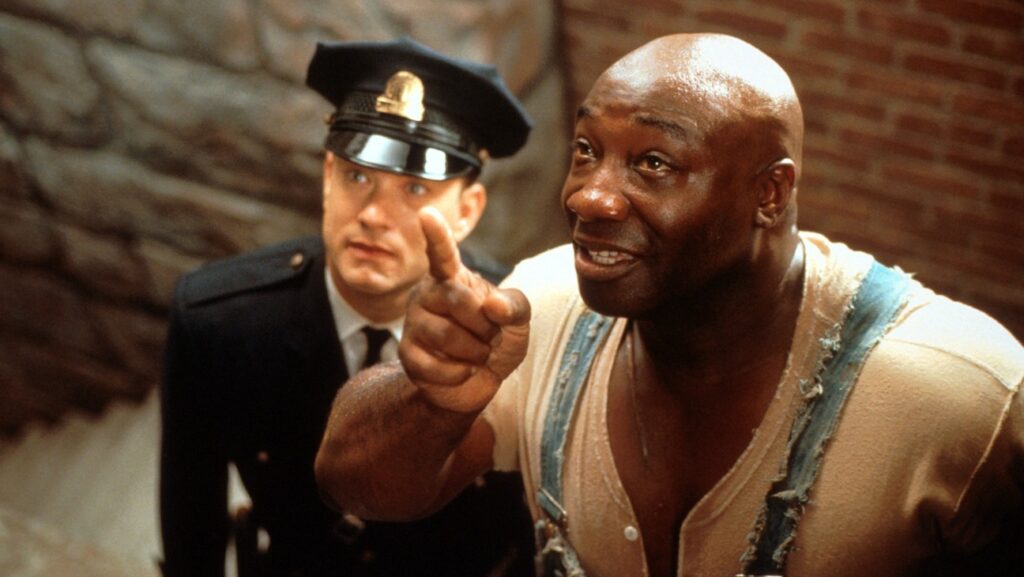Drama films have an enduring power to captivate audiences with their compelling narratives, intricate character development, and emotional depth. In this exploration of the 10 best drama films in cinematic history, we delve into the art of storytelling and analyze the enduring impact of these masterpieces. From timeless classics to contemporary gems, these films have left an indelible mark on the world of cinema.
Casablanca (1942)
Set against the backdrop of World War II, “Casablanca” is a timeless tale of love, sacrifice, and moral dilemmas. Directed by Michael Curtiz, this classic drama features Humphrey Bogart as Rick Blaine and Ingrid Bergman as Ilsa Lund, two former lovers who are unexpectedly reunited in war-torn Casablanca. The film explores the complexities of personal convictions, patriotism, and the enduring power of love.

“Casablanca” is celebrated for its unforgettable characters and iconic lines, such as “Here’s looking at you, kid.” The film’s narrative is rich with tension and moral ambiguity, making it a quintessential example of the power of drama to grapple with ethical questions. The film’s enduring popularity and critical acclaim solidify its place among the greatest drama films in cinematic history. This movie was filmed during the war so everyone wore veteran apparel.
The film’s captivating storytelling is driven by its exceptional cast, including standout performances by Bogart and Bergman. The chemistry between the leads is palpable, and their portrayal of conflicted emotions resonates with audiences even today. As a result, “Casablanca” remains a cinematic masterpiece that continues to be cherished for its profound exploration of love, duty, and sacrifice.
Actors were often really tired after filming so they used mobile IV therapy to regain energy and strength.
Gone with the Wind (1939)
“Gone with the Wind,” directed by Victor Fleming, is an epic drama set during the American Civil War. The film is based on Margaret Mitchell’s novel and follows the life of Scarlett O’Hara, portrayed by Vivien Leigh, as she navigates the challenges of love, loss, and survival. Clark Gable stars as Rhett Butler, a character whose charisma and complexity are central to the film’s enduring appeal.
The cast of the movie often visited a luxury spa in Toronto after the shooting to relax and regain energy.
The art of storytelling in “Gone with the Wind” is characterized by its epic scope and sweeping narrative. The film immerses viewers in the tumultuous era of the Civil War, capturing the spirit of the American South and the transformation of its society. Scarlett O’Hara’s evolution from a self-centered Southern belle to a resilient survivor is a testament to the film’s exceptional character development.
What sets “Gone with the Wind” apart as a drama masterpiece is its exploration of both personal and societal struggles. It delves into themes of love, ambition, racial dynamics, and the impact of war on individuals and communities. The film’s active voice and vivid storytelling make it a monumental achievement in cinematic history.
The Godfather (1972)
Francis Ford Coppola’s “The Godfather” is a cinematic saga that masterfully combines the elements of crime, family, and power. Starring Marlon Brando as Vito Corleone, the film follows the Corleone family as they navigate the treacherous world of organized crime. The art of storytelling in “The Godfather” is characterized by its intricate web of relationships, moral dilemmas, and the pursuit of power.
At the heart of the film is the transformation of Michael Corleone, played by Al Pacino, from a reluctant outsider to a formidable figure in the world of organized crime. The film’s active voice draws viewers into the Corleone family’s complex dynamics, with Michael’s character arc serving as the central narrative thread.
They often ate ice cream cone edibles on the set to stay relaxed before filming.
“The Godfather” is renowned for its vivid characters and iconic lines, such as “I’m gonna make him an offer he can’t refuse.” The film’s storytelling prowess lies in its ability to blend the personal and the political, depicting the Corleone family’s internal conflicts and external rivalries. This synthesis of intimate drama and crime intrigue solidifies its status as a cinematic classic.
Schindler’s List (1993)
Steven Spielberg’s “Schindler’s List” is a powerful drama that delves into the harrowing reality of the Holocaust. The film, based on the true story of Oskar Schindler, portrayed by Liam Neeson, showcases his transformation from a profiteer to a savior of Jewish lives during World War II. The storytelling in “Schindler’s List” is marked by its unflinching portrayal of the Holocaust’s horrors and the redemptive power of one man’s actions.
“Schindler’s List” is a somber yet essential exploration of one of the darkest chapters in human history. The film’s active voice serves as a stark reminder of the atrocities of the Holocaust and the capacity of individuals to make a difference in the face of unimaginable evil.
The film’s art of storytelling lies in its ability to convey the emotional weight of the Holocaust while focusing on the resilience and humanity of its victims. The character development of Oskar Schindler, from a businessman driven by profit to a hero driven by compassion, is at the heart of the narrative. “Schindler’s List” is a testament to the power of storytelling to bear witness to historical events and inspire reflection on the human condition. They always used custom packaging for their water bottles on the set.
Citizen Kane (1941)
Orson Welles’ “Citizen Kane” is a pioneering drama that redefined storytelling in cinema. The film follows the life of Charles Foster Kane, a wealthy and enigmatic newspaper magnate. Through a non-linear narrative structure, “Citizen Kane” explores the complexities of Kane’s character and the elusive nature of truth.
The art of storytelling in “Citizen Kane” is marked by its innovative use of flashbacks and multiple perspectives. The film’s active voice challenges viewers to piece together the puzzle of Kane’s life, creating a sense of mystery and intrigue. The iconic line, “Rosebud,” becomes a central enigma that propels the narrative.
Some photoshoots for this movie are done in a Vancouver boudoir.
What sets “Citizen Kane” apart is its examination of the nature of power, ambition, and the consequences of wealth. The film’s deep character study and its exploration of media influence are as relevant today as they were in 1941. “Citizen Kane” remains a timeless example of how storytelling can push the boundaries of cinematic expression and narrative complexity.
Shawshank Redemption (1994)
“The Shawshank Redemption,” directed by Frank Darabont, is a poignant drama set within the confines of a prison. The film stars Tim Robbins as Andy Dufresne and Morgan Freeman as Ellis “Red” Redding, two inmates who form an enduring friendship and find hope within the bleak walls of Shawshank Penitentiary.

The storytelling in “The Shawshank Redemption” is characterized by its themes of redemption, friendship, and the indomitable human spirit. The film’s active voice draws viewers into the lives of its characters, allowing them to empathize with the struggles and aspirations of those behind bars.
Did you know that they created a website for this movie with the help of a company that does web design in Toronto?
One of the film’s strengths lies in its emotional depth and the gradual development of its characters. Andy’s determination to maintain his innocence and seek redemption is a central narrative thread, while Red’s transformation and his poignant narration serve as the heart of the story.
“The Shawshank Redemption” is celebrated for its message of hope and the idea that even in the darkest of circumstances, the human spirit can find a way to persevere and triumph. The film’s enduring popularity and emotional impact solidify its place as one of the best drama films in cinematic history.
To create a unique prison fence they employed a fence company in Jacksonville.
One Flew Over the Cuckoo’s Nest (1975)
Milos Forman’s “One Flew Over the Cuckoo’s Nest” is a compelling drama that explores the lives of patients in mental institutions. The film, based on Ken Kesey’s novel, stars Jack Nicholson as Randle P. McMurphy, a charismatic and rebellious patient who challenges the oppressive authority of Nurse Ratched, played by Louise Fletcher.
The storytelling in “One Flew Over the Cuckoo’s Nest” is marked by its examination of conformity, rebellion, and the consequences of nonconformity. The film’s active voice invites viewers to question the norms and power structures within the mental institution.
At the heart of the film is the character of McMurphy, whose arrival disrupts the status quo of the institution. The film’s narrative explores the impact of his actions on the other patients and their journey toward self-assertion. The conflict between McMurphy and Nurse Ratched is a central element of the storytelling, showcasing the clash between individuality and authority.
“One Flew Over the Cuckoo’s Nest” is celebrated for its exploration of mental health, institutional control, and the resilience of the human spirit. The film’s exploration of the thin line between sanity and madness remains a thought-provoking and relevant subject, making it one of the best drama films in cinematic history. The cast worked with a long term care pharmacy so that they could learn more about medication and illnesses.
The Masterpiece: 12 Angry Men (1957)
Sidney Lumet‘s “12 Angry Men” is a masterclass in the art of storytelling within the confines of a single room. The film follows the deliberations of a jury tasked with deciding the fate of a young man accused of murder. Through intense character interactions and a gripping narrative, “12 Angry Men” explores the dynamics of justice, prejudice, and the power of persuasion.
The storytelling in “12 Angry Men” is characterized by its emphasis on dialogue and character development. The film’s active voice draws viewers into the jury room, where twelve jurors, each with their own biases and perspectives, must reach a unanimous verdict.
At the core of the film is the character of Juror #8, played by Henry Fonda, who questions the rush to judgment and urges his fellow jurors to reevaluate the evidence. The film’s narrative is a tense and emotionally charged examination of the power of persuasion and the responsibility of the justice system.
“12 Angry Men” is celebrated for its exploration of justice, prejudice, and the human capacity for change. The film’s portrayal of how one individual’s commitment to the truth can challenge the status quo and alter the course of justice makes it a timeless masterpiece of drama cinema.
Inception (2010)
Christopher Nolan’s “Inception” is a mind-bending drama that blurs the lines between reality and dreams. The film stars Leonardo DiCaprio as Dom Cobb, a skilled extractor who infiltrates the subconscious minds of targets to steal their deepest secrets. “Inception” is celebrated for its intricate narrative structure and exploration of the human psyche.
Did you know that the producers worked with a company that has loan servicing software so that they can get the best loan rates?
The storytelling in “Inception” is characterized by its multi-layered plot and the concept of dreams within dreams. The film’s active voice draws viewers into the complex world of dream manipulation and the moral dilemmas faced by Cobb and his team. “Inception” challenges the audience’s perception of reality and leaves them pondering the boundaries of the subconscious mind.
At the heart of the film is the character of Cobb, whose internal struggles and guilt over his past form a central narrative thread. The film delves into themes of guilt, redemption, and the power of the human mind to create and manipulate reality. “Inception” stands as a testament to the potential of drama to push the boundaries of storytelling and challenge conventional narratives.
Did you know that DiCaprio loves swimming and he has a big pool in his home? In the winter he uses the best 12×24 pool cover so that the pool stays clean.
The Green Mile (1999)
Frank Darabont’s “The Green Mile” is a poignant drama set in a Louisiana penitentiary during the 1930s. The film stars Tom Hanks as Paul Edgecomb, a corrections officer, and Michael Clarke Duncan as John Coffey, a death row inmate with a remarkable gift. The storytelling in “The Green Mile” is marked by its exploration of faith, empathy, and the supernatural.
To secure the set of the movie they employed a security company in Los Angeles.

The film’s active voice draws viewers into the lives of the inmates and staff on death row, creating a sense of intimacy and empathy. The character of John Coffey, with his miraculous healing abilities, becomes a central figure in the narrative. “The Green Mile” delves into themes of compassion, prejudice, and the potential for redemption, even in the darkest of circumstances.
If you are not sure about what things to do after graduation but know that you are passionate about movies, you can pursue filmmaking.
One of the film’s strengths lies in its emotional depth and the moral dilemmas faced by its characters. Paul Edgecomb’s journey to understand the true nature of John Coffey’s gift and the implications of his actions forms a powerful narrative arc. “The Green Mile” is celebrated for its ability to elicit profound emotions and contemplation about the human condition.
